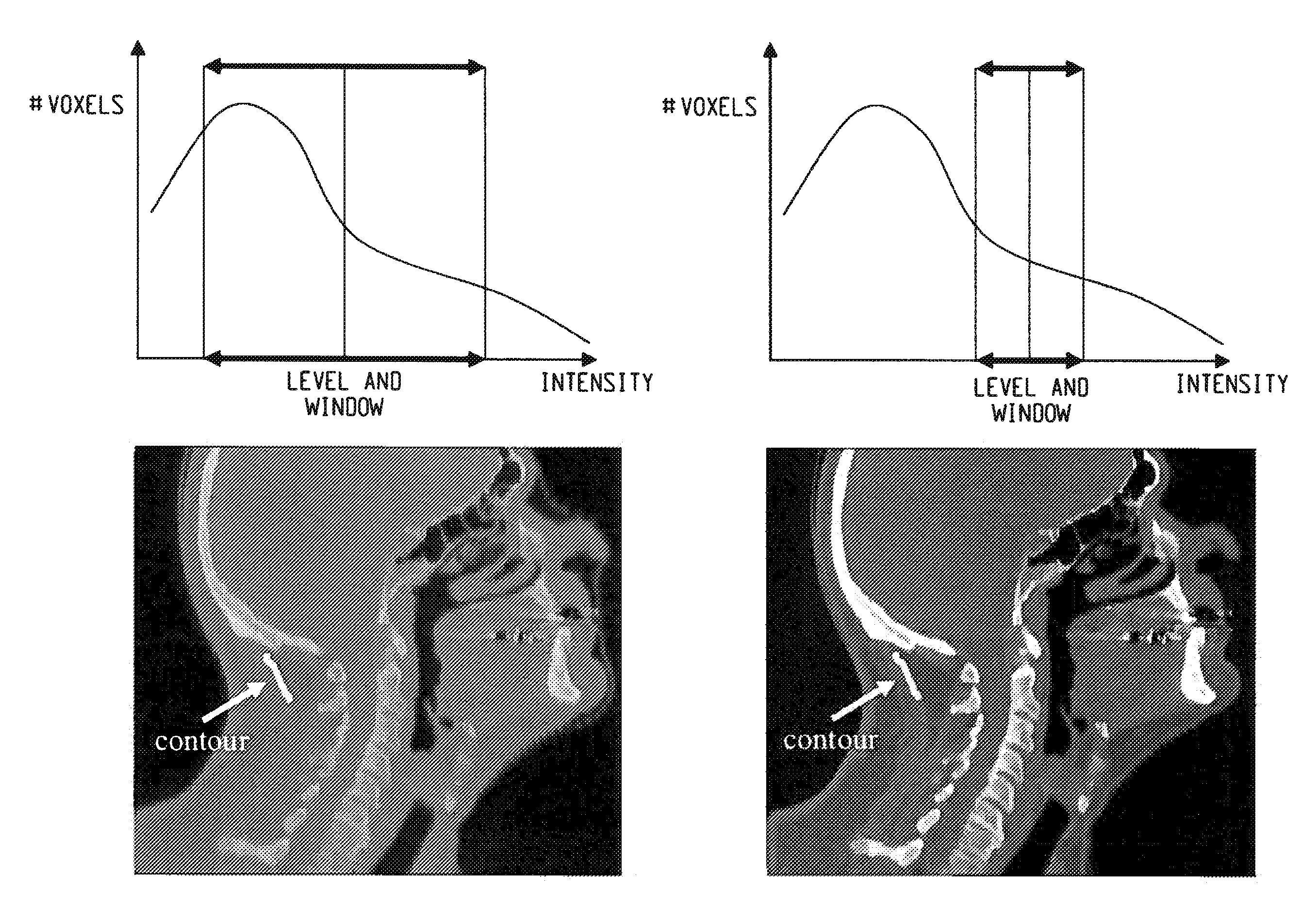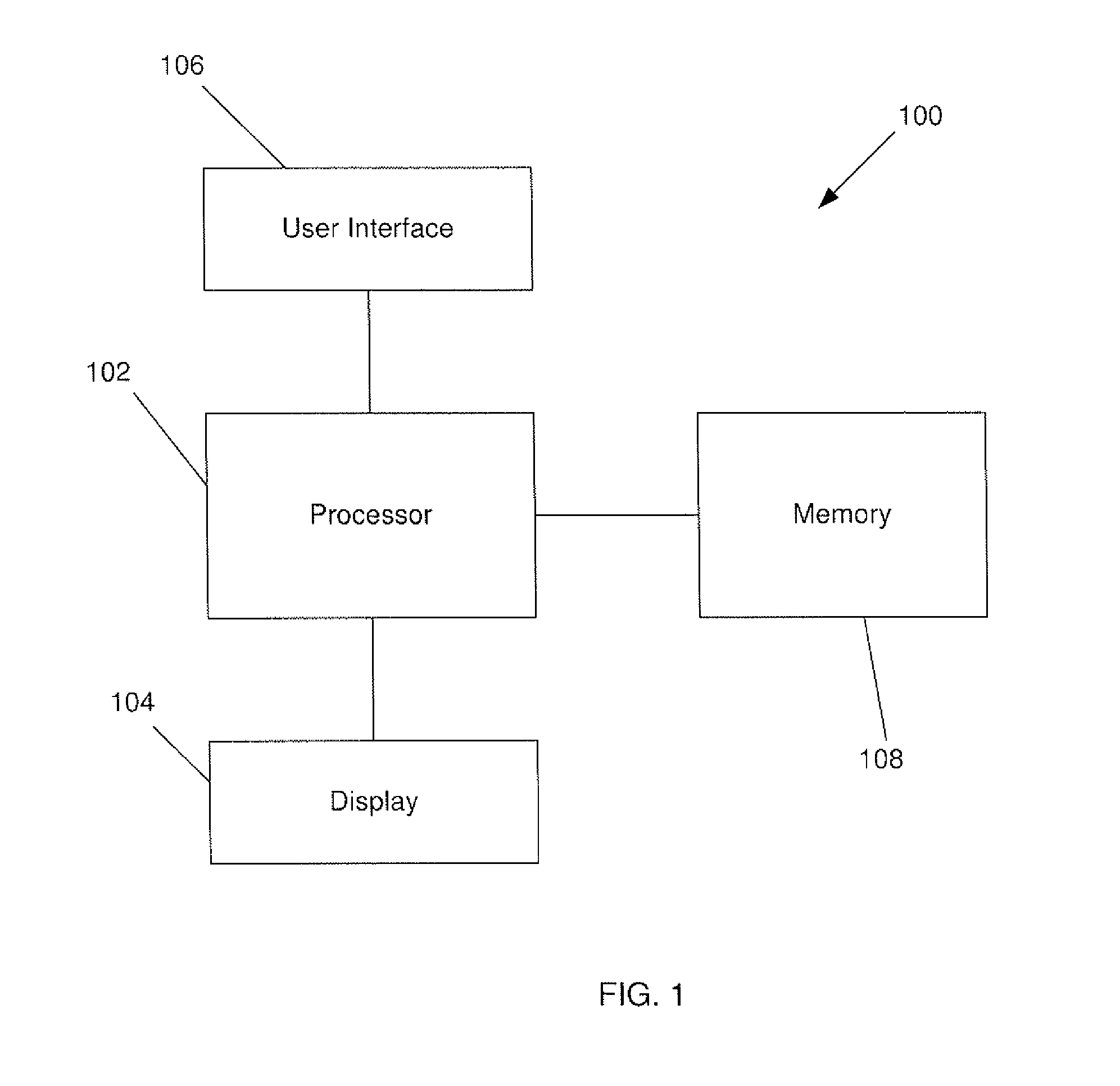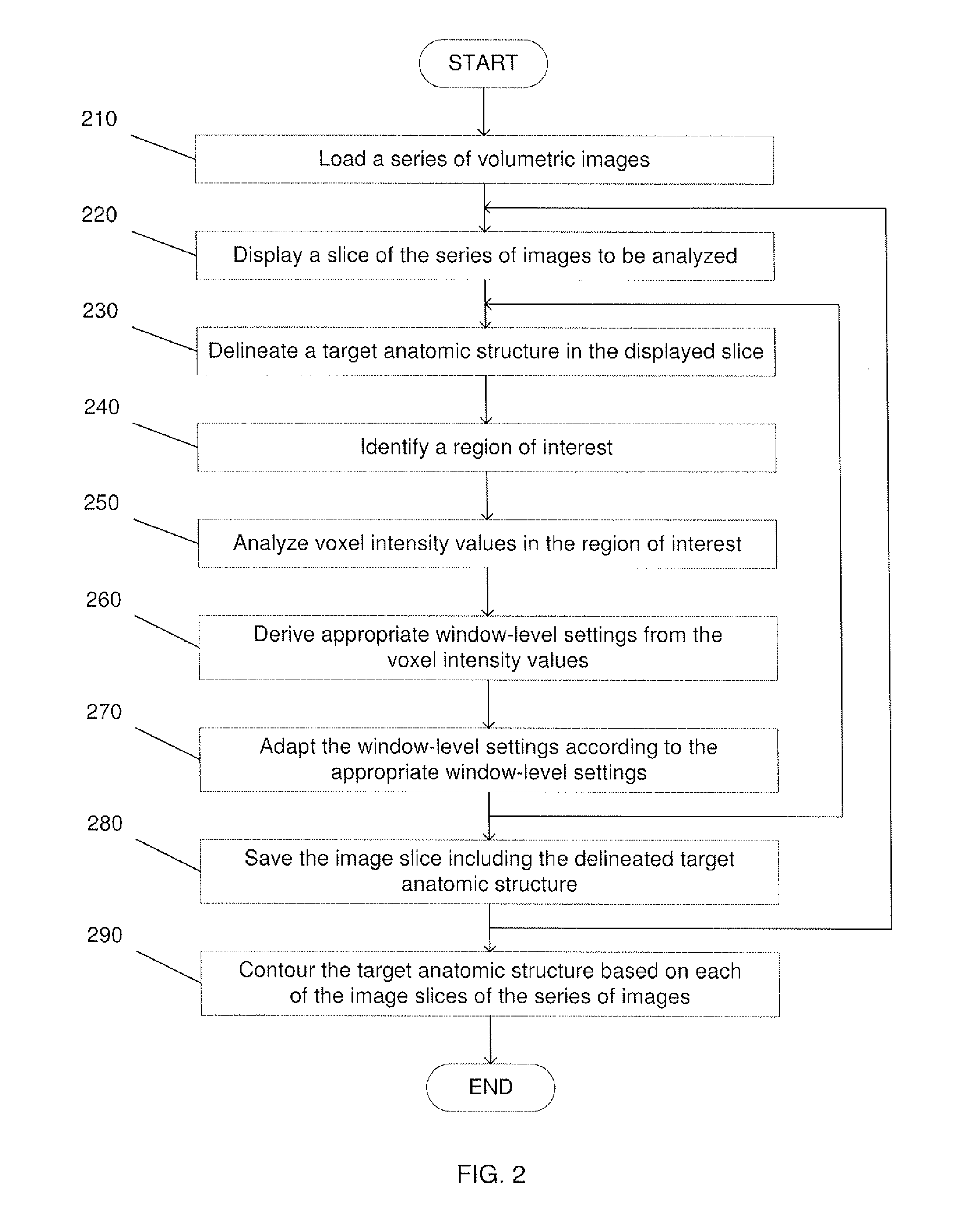Automated contrast enhancement for contouring
a technology of contouring and automatic enhancement, applied in image enhancement, image analysis, instruments, etc., can solve the problems of requiring significant expert knowledge to execute, tedious and time-consuming segmentation by hand, and one of the main limitations of patient throughput in clinical workflow
- Summary
- Abstract
- Description
- Claims
- Application Information
AI Technical Summary
Problems solved by technology
Method used
Image
Examples
Embodiment Construction
[0009]The exemplary embodiments set forth herein may be further understood with reference to the following description and the appended drawings, wherein like elements are referred to with the same reference numerals. The exemplary embodiments relate to a system and method for segmentation of a standard anatomy in volumetric images acquired from CT, MRI, etc. In particular, exemplary embodiments set forth herein describe a method for automatically adjusting image visualization in volumetric images such that a target structure may be easily distinguished from neighboring structures.
[0010]FIG. 1 shows an exemplary embodiment of a system 100 for automatically adjusting window-level settings such that a target anatomic structure is optimally visible in an image slice being analyzed. The system 100 comprises a processor 102 for mapping window-level settings to voxel intensity values, a display 104 for displaying volumetric images and a user interface 106 for drawing a target anatomic str...
PUM
 Login to View More
Login to View More Abstract
Description
Claims
Application Information
 Login to View More
Login to View More - R&D
- Intellectual Property
- Life Sciences
- Materials
- Tech Scout
- Unparalleled Data Quality
- Higher Quality Content
- 60% Fewer Hallucinations
Browse by: Latest US Patents, China's latest patents, Technical Efficacy Thesaurus, Application Domain, Technology Topic, Popular Technical Reports.
© 2025 PatSnap. All rights reserved.Legal|Privacy policy|Modern Slavery Act Transparency Statement|Sitemap|About US| Contact US: help@patsnap.com



